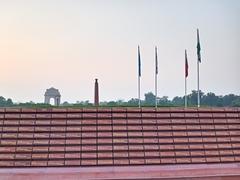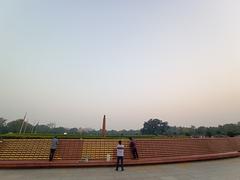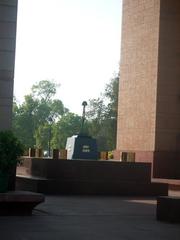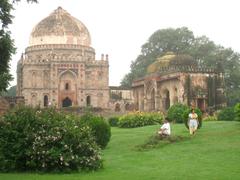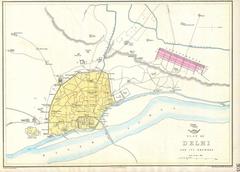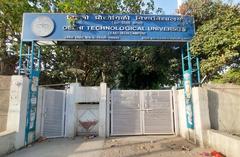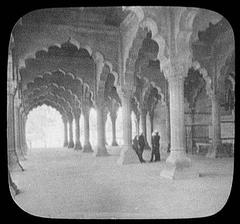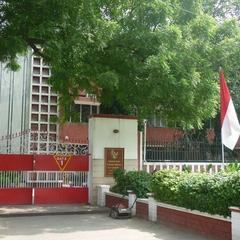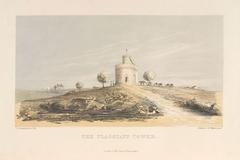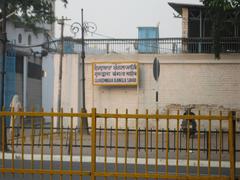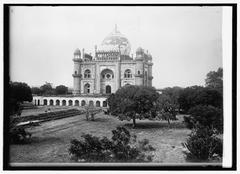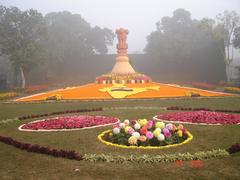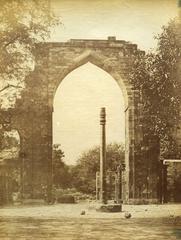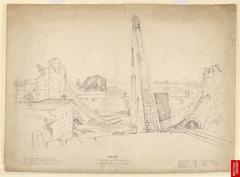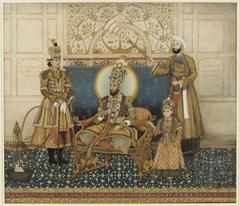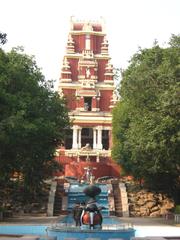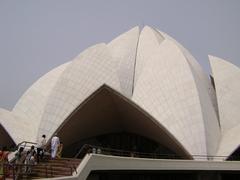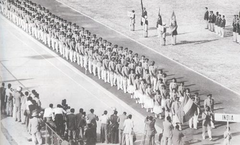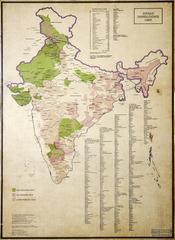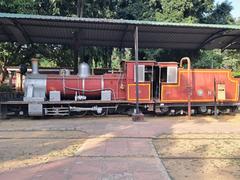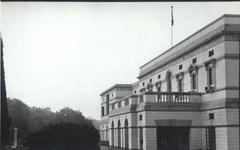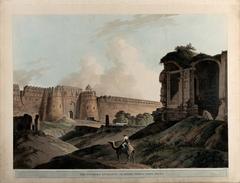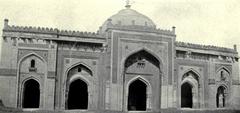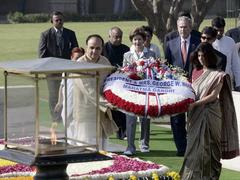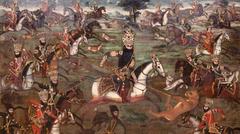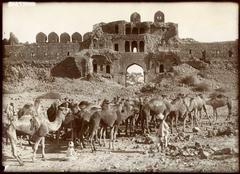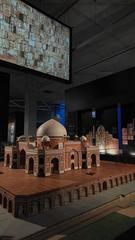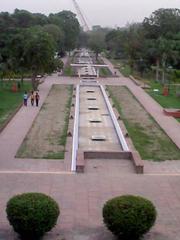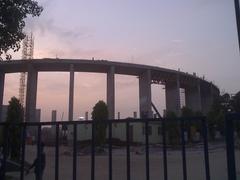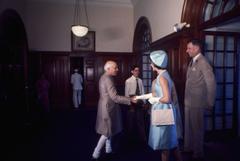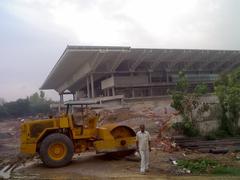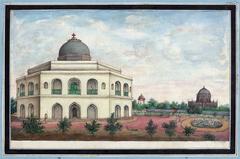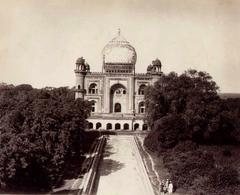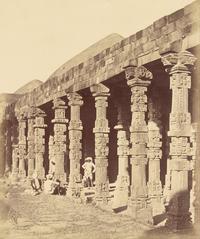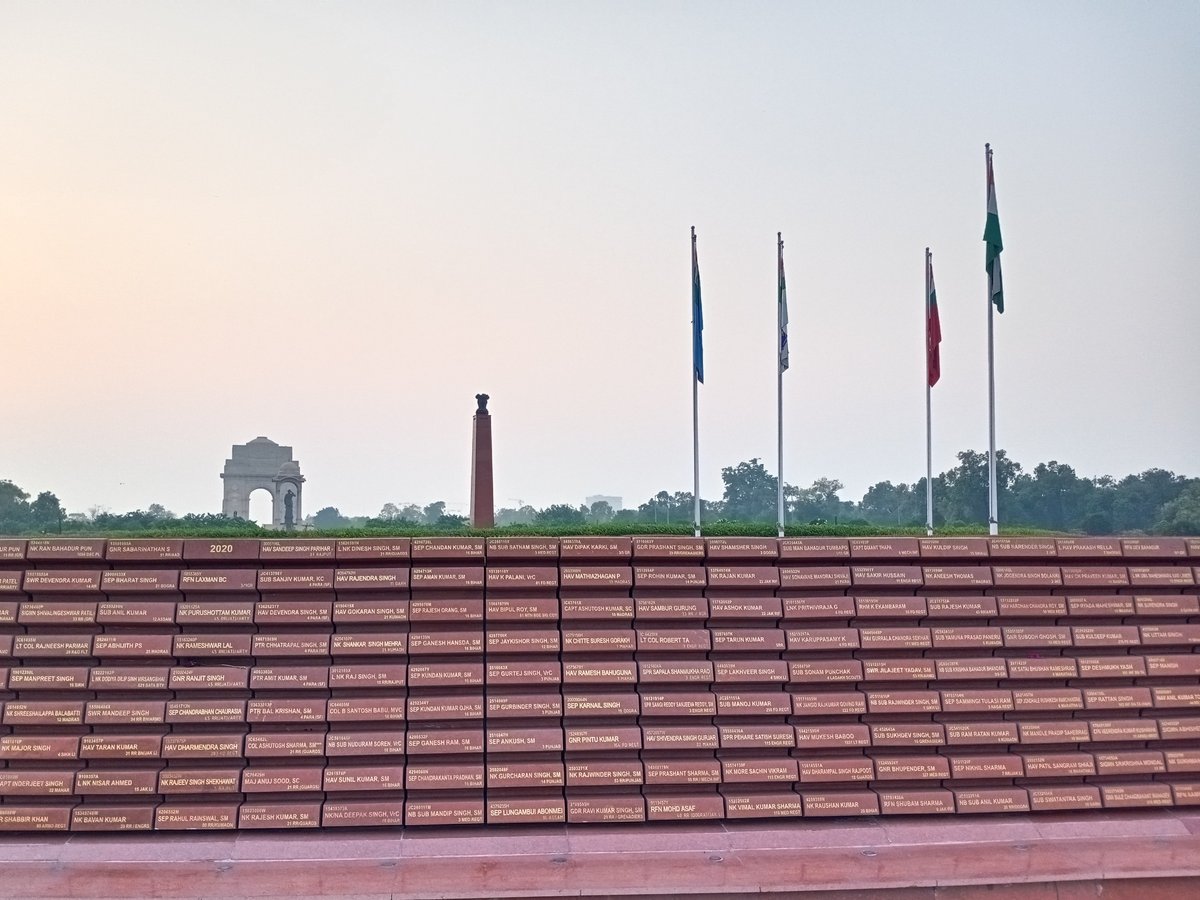
National War Memorial New Delhi: Visiting Hours, Tickets, and Travel Guide
Date: 14/06/2025
Introduction
Situated at the heart of India’s capital, the National War Memorial in New Delhi stands as a solemn and inspiring tribute to the valor and sacrifice of India’s armed forces since independence. Dedicated to over 26,000 soldiers who have laid down their lives in various conflicts and peacekeeping missions post-1947, the memorial fills a crucial role in India’s commemorative landscape, complementing colonial-era monuments like India Gate. Officially inaugurated in February 2019, it has become a pivotal site for remembrance, military ceremonies, and public reflection.
This comprehensive guide provides essential information about the memorial’s history, visiting hours, ticketing, accessibility, transportation, architectural significance, cultural impact, and practical travel tips. Whether you are a history enthusiast, a tourist, or a resident, this article will help you plan a meaningful and convenient visit to one of New Delhi’s most profound landmarks.
For further details and planning resources, refer to the official CPWD Brief and The Himalayan Architect.
Table of Contents
- Introduction
- Genesis of the National War Memorial
- Historical Context: India Gate and Amar Jawan Jyoti
- Purpose and Dedication
- Design Competition and Construction
- Symbolism and Architectural Significance
- Visiting Hours, Tickets, and Accessibility
- How to Reach the National War Memorial
- On-Site Experience
- Guided Tours and Special Events
- National and Cultural Impact
- Numbers and Scope
- Visitor Tips
- Nearby Attractions and Amenities
- Safety and Regulations
- Frequently Asked Questions (FAQs)
- Visuals and Media
- Conclusion and Travel Advice
- References
Genesis of the National War Memorial
The vision for a national war memorial began in 1961, as India recognized the need for a central monument dedicated to the memory of armed forces personnel who made the ultimate sacrifice for the nation. Despite regional and regimental memorials, there was no pan-India site commemorating servicemen and women who fell in the line of duty post-independence (CPWD Brief). After decades of deliberation, the Union Cabinet approved the project in October 2015, selecting the C-Hexagon area near India Gate for its prominent and accessible location (The Himalayan Architect).
Historical Context: India Gate and Amar Jawan Jyoti
India Gate, completed in 1931 by Sir Edwin Lutyens, commemorates the 70,000 soldiers of the British Indian Army who died in World War I and the Third Anglo-Afghan War (Cultural India; The Divine India). While it is a powerful national symbol, its focus is primarily on those who served under the British Empire.
Amar Jawan Jyoti, added in 1972 after the Indo-Pakistani War of 1971, honored soldiers who died in that conflict. The eternal flame, set beneath India Gate, became a focal point for remembrance until January 2022, when it was merged with the eternal flame at the new National War Memorial, shifting the center of national commemoration (Times of India; The Himalayan Architect).
Purpose and Dedication
The National War Memorial is dedicated to the more than 26,000 soldiers of the Indian Armed Forces who have lost their lives since 1947 in wars, peacekeeping missions, and disaster response operations (CPWD Brief; Manjulika Pramod). It stands as a place of honor, reflection, and national pride, aiming to instill patriotism and respect for the armed forces among all citizens (Study Rankers).
Design Competition and Construction
A global design competition in 2016–17 attracted 427 entries, with the winning concept by Yogesh Chandrasan of WeBe Design Lab, Chennai (The Himalayan Architect). The memorial was constructed at a cost of ₹176 crore in 20 months, under the supervision of the Ministry of Defence and executed by HQ IDS and M/s NCC Ltd (CPWD Brief).
Symbolism and Architectural Significance
The memorial’s layout is inspired by the “Chakravyuha” battle formation from the Mahabharata, represented by five concentric circles:
- Amar Chakra (Circle of Immortality): Central obelisk and eternal flame, symbolizing the undying spirit of the soldier.
- Veerta Chakra (Circle of Bravery): Bronze murals depicting major battles.
- Tyag Chakra (Circle of Sacrifice): Granite walls inscribed with over 26,000 names of martyrs.
- Rakshak Chakra (Circle of Protection): Landscaped ring of trees, representing the living protectors.
- Param Yodha Sthal: Busts honoring 21 recipients of the Param Vir Chakra (CPWD Brief).
Materials like locally sourced granite and bronze, along with careful landscaping, create a dignified and enduring environment (The Himalayan Architect).
Visiting Hours, Tickets, and Accessibility
- Entry Fee: Free for all visitors.
- Timings:
- November to March: 9:00 AM – 7:30 PM (last admission: 7:00 PM)
- April to October: 9:00 AM – 8:30 PM (last admission: 8:00 PM)
- Closed: Mondays and certain public holidays.
- Accessibility: Fully wheelchair accessible, with ramps, wide paths, and accessible restrooms. Wheelchairs are available on request.
How to Reach the National War Memorial
Location: C-Hexagon, India Gate Circle, New Delhi, Delhi 110001.
By Metro
- Central Secretariat (Yellow/Violet Lines): ~2 km away.
- Khan Market/Janpath (Violet Line): Short auto/taxi ride.
- Udyog Bhawan (Yellow Line): Nearby alternative.
- Mandi House/Pragati Maidan (Blue Line): Slightly farther.
By Bus
- Baroda House Bus Stop: 0.8 km away.
- Other DTC Buses: Regular service to India Gate.
By Train
- New Delhi Railway Station: ~2 km; 15–20 min walk or short taxi ride.
By Air
- Indira Gandhi International Airport: ~18.5 km; taxis/app-based rides available.
- Hindon Domestic Airport: ~12 km away.
By Private Vehicle
- Limited parking, especially during weekends or public events. Public transport is recommended.
On-Site Experience
Layout and Navigation
- The memorial spans about 40 acres with four main concentric circles and a dedicated Param Yodha Sthal.
- Paved walkways and ramps ensure ease of movement for all visitors.
- The National War Memorial app helps locate specific names and provides historical context.
Ceremonies and Events
- Retreat Drill: Daily at sunset.
- Change of Guard Ceremony: Sunday evenings, accompanied by a military band.
- Special Events: Held on Republic Day, Independence Day, and during other commemorations. Check the official website or app for schedules.
Photography and Facilities
- Photography is allowed for personal use; maintain decorum during ceremonies.
- Facilities include restrooms, drinking water dispensers, benches, and shaded rest areas.
- Security screening is mandatory at entry.
Guided Tours and Special Events
While official guided tours are not provided, comprehensive information is available via the official mobile app and on-site signage. Occasionally, heritage organizations and the Ministry of Defence arrange special guided tours and events, especially on national holidays (Manjulika Pramod).
National and Cultural Impact
Since its inauguration, the National War Memorial has become a central site for national remembrance, shifting the focus from colonial-era monuments to a distinctly Indian narrative. Regular ceremonies such as the Retreat Drill and Change of Guard reinforce the connection between citizens and the armed forces (India Dekho).
Numbers and Scope
- Over 26,000 names are inscribed.
- Covers 40 acres at the C-Hexagon.
- 21 busts at the Param Yodha Sthal.
- Constructed in 20 months at a cost of ₹176 crore (CPWD Brief).
Visitor Tips
- Dress respectfully and maintain silence, especially near the Wall of Valor and during ceremonies.
- Visit during early mornings or late afternoons to avoid crowds and enjoy cooler weather.
- Use the official app for navigation and information.
- The site is family-friendly and fully accessible.
Nearby Attractions and Amenities
- India Gate: Adjacent to the memorial.
- Rashtrapati Bhavan and Mughal Gardens: Explore India’s governmental and horticultural heritage.
- National Museum, National Gallery of Modern Art: For art and history enthusiasts.
- Connaught Place: Dining, shopping, and entertainment.
Dining and Accommodation
- Saravana Bhavan: South Indian cuisine.
- Bukhara: Renowned for North Indian kebabs.
- Daniell’s Tavern: Colonial and Indian fusion.
- Parathe Wali Gali: Traditional street food.
- Hotels range from budget (Comfort Inn, Hotel Blue Pearl) to luxury (Maidens Hotel, Hotel Ritz).
Safety and Regulations
- Security screening at entry is mandatory.
- Prohibited items: Large bags, sharp objects, some electronics.
- Lost and found assistance is available on-site.
Frequently Asked Questions (FAQs)
Q: Is there any ticket or entry fee?
A: No, entry is completely free.
Q: What are the visiting hours?
A: 9:00 AM to 7:30 PM (Nov–Mar); 9:00 AM to 8:30 PM (Apr–Oct), with last admission 30 minutes before closing.
Q: Are guided tours available?
A: No official tours, but the app and signage provide detailed information.
Q: Is the memorial accessible for people with disabilities and children?
A: Yes, it is fully accessible and family-friendly.
Q: When can I see ceremonies?
A: The daily Retreat Drill at sunset and the Sunday evening Change of Guard Ceremony.
Q: Can I take photographs?
A: Yes, but be respectful during ceremonies and in solemn zones.
Visuals and Media
Explore virtual tours and high-quality images through the official CPWD website and The Himalayan Architect.
The Upcoming National War Museum
A landmark National War Museum is planned adjacent to the memorial, designed to showcase India’s military heritage from ancient times to the present (unbuiltideas.com; architecturaldigest.in). The museum will offer immersive galleries, digital archives, and public engagement spaces. As of June 2025, visiting hours and ticketing details are pending. Stay updated via official channels for opening information.
Conclusion and Final Travel Advice
The National War Memorial is more than a monument—it is a living tribute to the courage, sacrifice, and dedication of India’s armed forces. Its accessible location, profound symbolism, and inclusive facilities make it an essential stop for anyone seeking to understand India’s military history and national spirit. Attend the daily Retreat Drill, use the official app for deeper engagement, and explore nearby attractions to enrich your visit.
For further information, download the Audiala app, follow official channels, and consult resources like the CPWD Brief and The Himalayan Architect.
Honor the past, understand the present, and inspire the future by experiencing the National War Memorial—a beacon of remembrance in the heart of New Delhi.
References
- National War Memorial New Delhi: Visiting Hours, Tickets, and Historical Significance, 2020, CPWD
- National War Memorial New Delhi: Architecture and Visitor Guide, 2024, The Himalayan Architect
- National War Memorial Visiting Hours, Tickets, and Guide, 2025, Manjulika Pramod
- WeBe Design Lab
- thinkMATTER
- IAS Gyan
- Outlook India
- Organiser
- unbuiltideas.com
- architecturaldigest.in
- architecture.live
- India Dekho
- Study Rankers
- bharattravelguru.com
- Cultural India
- The Divine India
- Times of India
